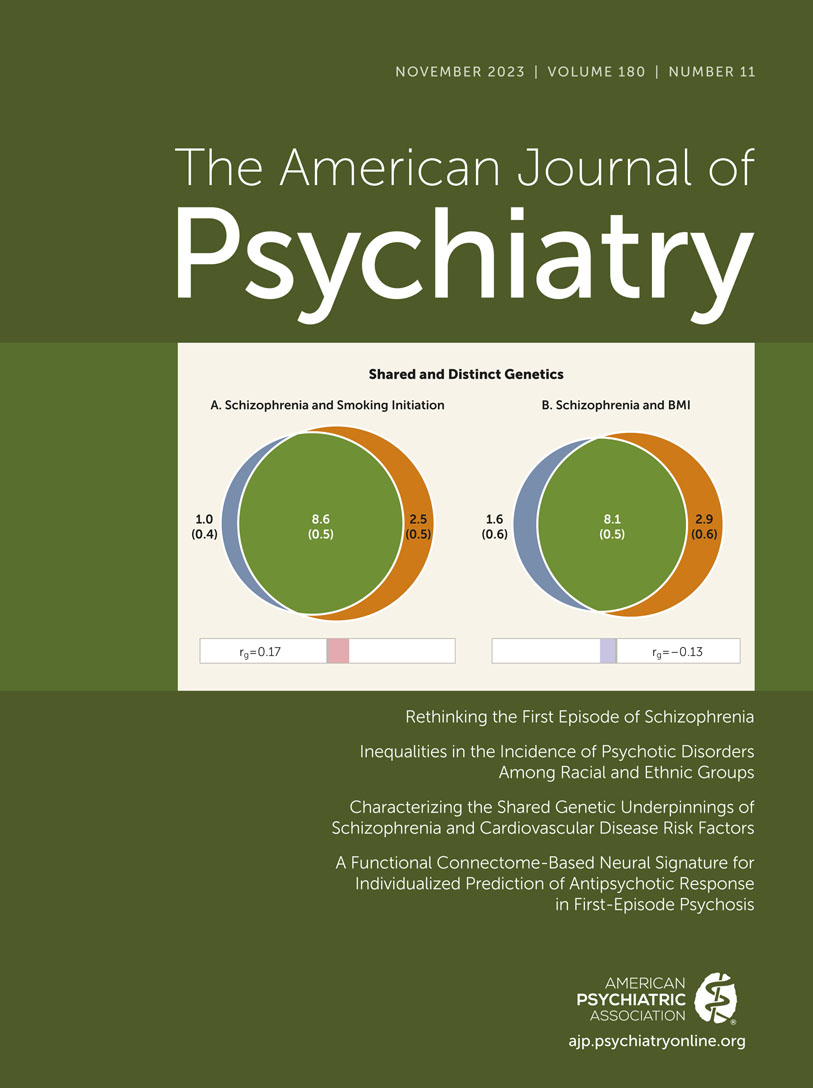Inequalities in the Incidence of Psychotic Disorders Among Racial and Ethnic Groups
Abstract
Objective:
The authors examined recent trends in incidence of psychotic disorders, demographic characteristics, and comorbid psychiatric and medical conditions among six racial/ethnic groups.
Method:
A retrospective cohort study design was used to examine the incidence of psychotic disorders across race/ethnicity groups and comorbid psychiatric and medical conditions among members of Kaiser Permanente Northern California from 2009 to 2019 (N=5,994,758). Poisson regression was used to assess changes in annual incidence, and Cox proportional hazards and logistic regression models adjusted for age and sex were used to test correlates and consequences.
Results:
Overall, the incidence of nonaffective psychotic disorders decreased slightly over the study period. Compared with White members, the risk of nonaffective psychosis diagnosis was higher among Black (hazard ratio=2.13, 95% CI=2.02–2.24) and American Indian or Alaskan Native (AIAN) (hazard ratio=1.85, 95% CI=1.53–2.23) members and lower among Asian (hazard ratio=0.72, 95% CI=0.68–0.76) and Hispanic (hazard ratio=0.91, 95% CI=0.87–0.96) members, as well as those whose race/ethnicity was categorized as “other” (hazard ratio=0.92, 95% CI=0.86–0.99). Compared with White members, the risk of affective psychosis diagnosis adjusted for age and sex was higher among Black (hazard ratio=1.76, 95% CI=1.62–1.91), Hispanic (hazard ratio=1.09, 95% CI=1.02–1.16), and AIAN (hazard ratio=1.38, 95% CI=1.00–1.90) members and lower among Asian (hazard ratio=0.77, 95% CI=0.71–0.83), Native Hawaiian or other Pacific Islander (hazard ratio=0.69, 95% CI=0.48–0.99), and “other” (hazard ratio=0.86, 95% CI=0.77–0.96) members. Psychotic disorders were associated with significantly higher odds of suicide (odds ratio=2.65, 95% CI=2.15–3.28), premature death (odds ratio=1.30, 95% CI=1.22–1.39), and stroke (odds ratio=1.64, 95% CI=1.55–1.72) and lower odds of health care utilization (odds ratio=0.44, 95% CI=0.42–0.47).
Conclusions:
This study demonstrates racial and ethnic variation in incident psychotic disorder diagnoses in the United States, compared with non-Hispanic Whites. Individuals diagnosed with psychosis face a greater burden of other negative health outcomes and lower odds of health care utilization, reflecting personal and economic impacts. Identifying risk factors for elevated rates and protective influences in subgroups can inform strategies for prevention and interventions to ameliorate severe consequences of psychotic syndromes.
Access content
To read the fulltext, please use one of the options below to sign in or purchase access.- Personal login
- Institutional Login
- Sign in via OpenAthens
- Register for access
-
Please login/register if you wish to pair your device and check access availability.
Not a subscriber?
PsychiatryOnline subscription options offer access to the DSM-5 library, books, journals, CME, and patient resources. This all-in-one virtual library provides psychiatrists and mental health professionals with key resources for diagnosis, treatment, research, and professional development.
Need more help? PsychiatryOnline Customer Service may be reached by emailing [email protected] or by calling 800-368-5777 (in the U.S.) or 703-907-7322 (outside the U.S.).



